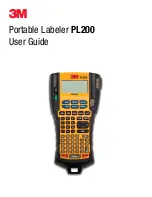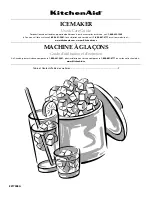
• 15 •
ENGLISH
Once the fi lter holder has been removed, some water will
still drip. This is due to the water pressure in the system.
Remove the grounds from the fi lter and any residues from
the screen (Fig.16).
Note.
Keep the clean fi lter holder installed on the machine
without tightening it too much, so that the entire brew
unit is always at the correct temperature.
BREWING AN ESPRESSO USING COFFEE
PODS
Note.
To use coff ee pods, remember to only use the tradi-
tional 1 cup fi lter (Fig.6).
Follow the instructions to make an espresso with ground
coff ee using the single-dose pre-ground coff ee pod in-
stead of ground coff ee. Insert the pod into the fi lter holder
(Fig.1-17); make sure that the paper of the pod does not
stick out of the fi lter holder.
PREPARING A CAPPUCCINO
To prepare a traditional cappuccino, we recommend:
-
using fresh whole milk at a cold temperature, prefer-
ably high quality. The density of the frothed milk will
depend on the milk fat content.
-
using stainless steel, circular, rounded milk jugs,
narrower at the top, with a spout, necessary to make
cappuccino decorations.
The steam wand (Fig.1-14) will dispense all the steam
required to froth the milk without bringing it to a boil.
With two or three attempts and a little eff ort you will
become experts in preparing cappuccino.
Before starting, it is important to slightly move the steam
wand outwards in order to insert the jug directly under it
and facilitate the movements required to froth the milk
correctly.
At this point continue as follows:
1.
Prepare the espresso in a large cappuccino cup as
indicated in the paragraph "Brewing an espresso
using ground coff ee".
2.
Press the steam button (Fig.1-3).
3.
After 15-20 seconds and when the steam temperature
indicator light (Fig.1-6) turns on.
4.
Turn the steam/hot water knob slightly counter-
clockwise to eliminate any condensation from the
wand then close the knob again.
5.
Place the jug, half-fi lled with cold milk, under the
steam wand.
6.
Place the steam nozzle just below the surface of the
milk; if it has been inserted too deep, the milk will not
be frothed; if it has not been inserted deep enough,
big bubbles will be produced and then disappear
immediately.
It is important to keep the nozzle not at the centre
but close to the edge of the jug, with an appropriate
angle to produce a stronger vortex (Fig.8-1).
7.
Turn the steam dispensing knob (Fig.1-7) counter-
clockwise to let the steam come out. During this phase
there is maximum air absorption and the milk must
be frothed almost cold.
Note.
The steam pressure increases as the knob is turned.
Note.
The dispensing operation should last no longer than
60 seconds.
Dispensing steam continuously for more than 60 seconds
can empty the boiler out completely. In this case, continue
as indicated in the section "Loading the circuit".
Note.
To froth the milk correctly, the steam nozzle (Fig.1-23)
must always be in contact with the milk and not with the
froth (Fig.8-2). Therefore, as the layer of froth increases,
the jug must be slightly raised trying to keep the nozzle in
contact with the milk, without touching the bottom of the
jug (Fig.8-A).
8.
Once the desired frothing has been achieved, the
steam nozzle must be pushed further to heat the milk
well.
Note.
It is advisable to always keep a hand on the rounded
part of the jug to feel the temperature increase of the
unfrothed milk.
9.
Once the desired result has been achieved, close the
steam knob, by turning it clockwise, to stop dispens-
ing steam and remove the jug.
Note.
After frothing the milk, to make the froth more com-
pact, it is advisable to lightly tap the jug on a fl at surface and
Содержание NEW CLASSIC RI9480
Страница 3: ...FIG 1 ...
Страница 4: ...FIG 6 FIG 5 FIG 7 FIG 2 FIG 4 FIG 3 ...
Страница 5: ...FIG 9 OK NO FIG 8 FIG 10 ...
Страница 6: ...FIG 14 FIG 11 FIG 13 FIG 15 FIG 12 FIG 16 ...
















































